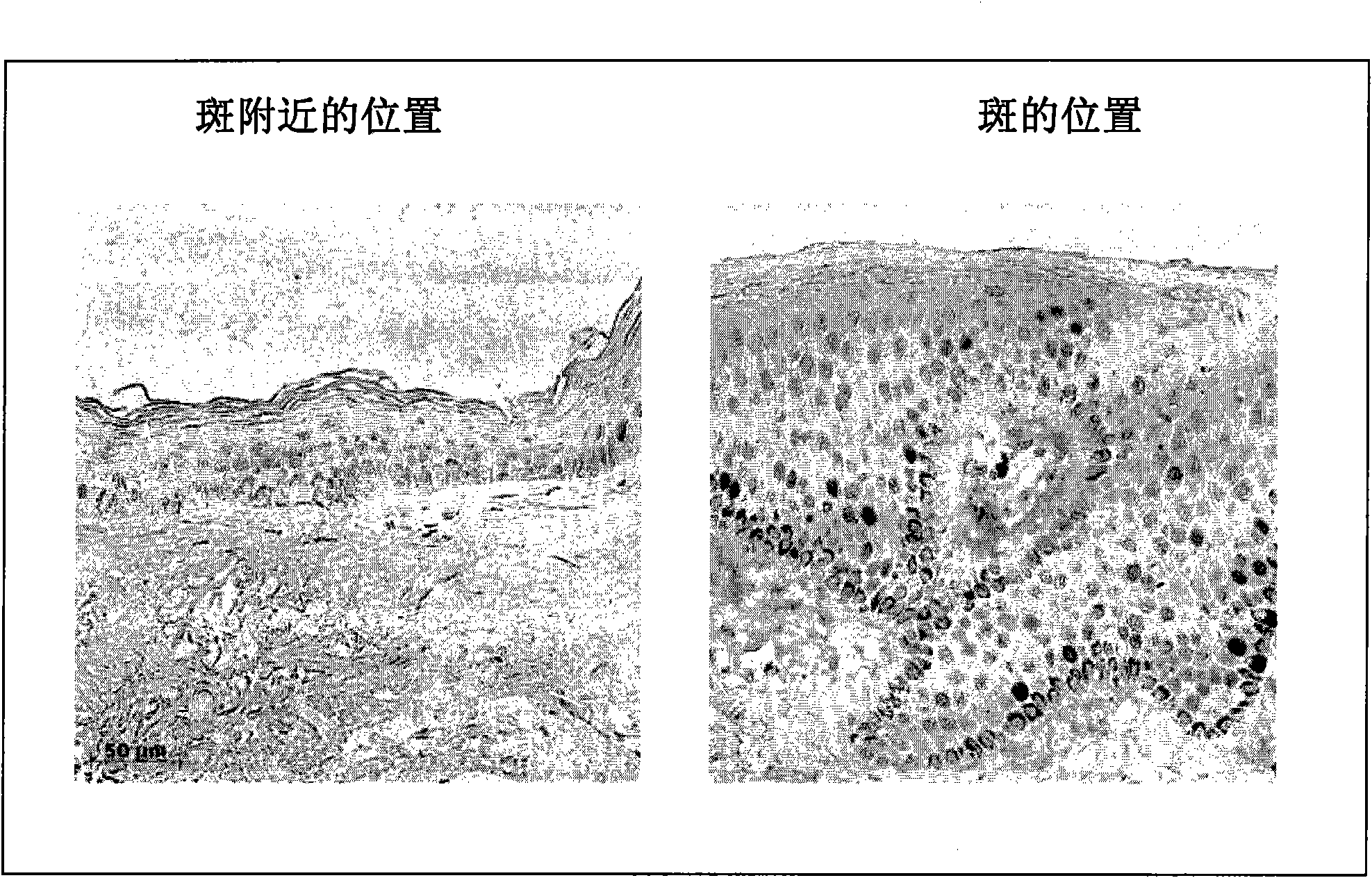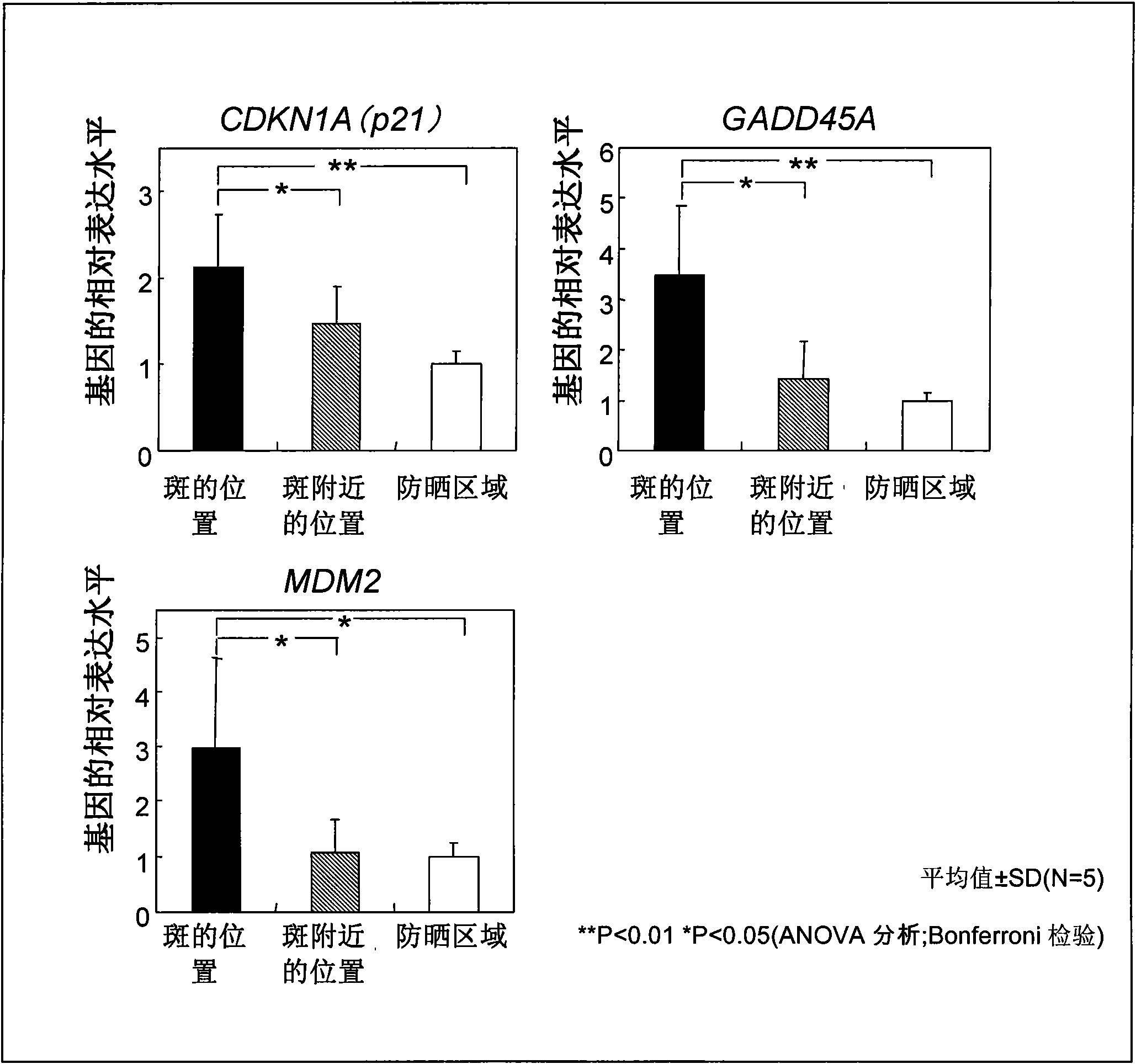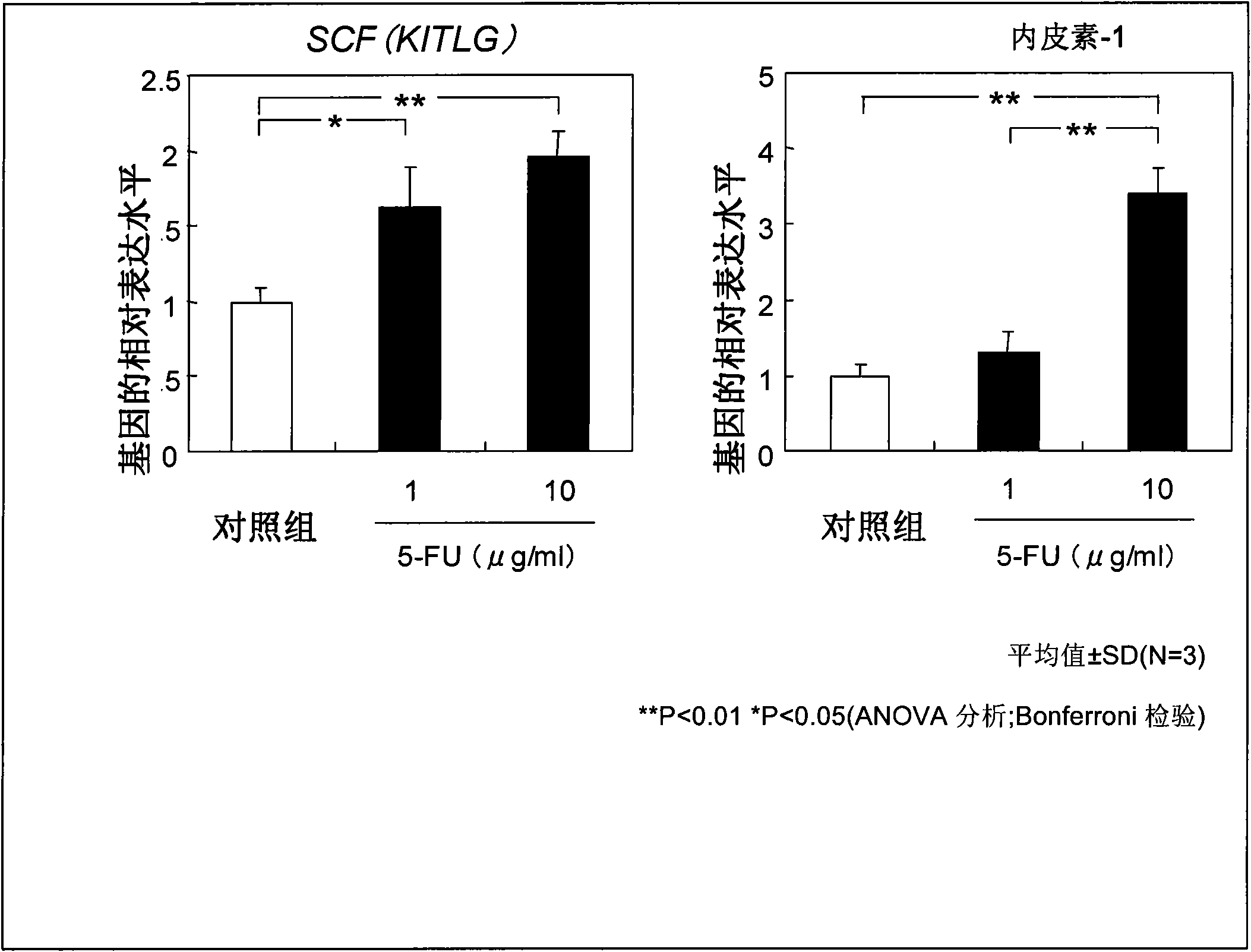Method of evaluating or selecting agents for preventing or improving pigmented spots
A technology of action and preparation, applied in the direction of material inspection products, measuring devices, instruments, etc.
- Summary
- Abstract
- Description
- Claims
- Application Information
AI Technical Summary
Problems solved by technology
Method used
Image
Examples
Embodiment 1
[0097] In this example, the expression of p53 in human skin tissue was analyzed by immunohistochemistry.
[0098] Skin tissue was collected from human skin with age spots, and paraffin sections of the tissue were prepared. After removal of paraffin, in REAL TM Each tissue section was heat-treated in Target Retrieval Solution (product of DAKO) at 95° C. for 45 minutes, thereby activating the antigen. After cooling at room temperature for 30 minutes, the tissue sections were rinsed with phosphate buffered saline (PBS), and then rinsed with 0.3% H 2 o 2 The solution was treated for 30 minutes. After washing with PBS, the tissue section was blocked with 10% normal goat serum (Nichirei Bioscience product) at room temperature for 1 hour, and then the mouse anti-human p53 antibody (DO-7, DAKO product) (primary antibody), and then, the sections were left overnight at 4°C. After washing with PBS, a peroxidase-labeled anti-mouse IgG polyclonal antibody (Fab') (product of Nichirei B...
Embodiment 2
[0101] In this example, the expression of p53 target genes in human epidermal tissue was analyzed.
[0102] First, the epidermis at the spot location, near the spot location (outer forearm), or sun-protected area (inner upper arm) was obtained from the skin of a healthy male adult according to the blister method. Specifically, each test site was sterilized, and the skin surface was contacted with a 1.0-2.5 mm diameter syringe (product of Terumo Corporation), followed by pumping for about 1-2 hours, and the epidermis was separated from the dermis. The isolated epidermis was isolated with sterile scissors to prepare a test body-derived sample.
[0103] Rinse the prepared epidermal tissue samples with PBS, and then transfer into RNAlater containing TM (QIAGEN product) in a test tube (1 mL), and then left to stand overnight at 4°C. Afterwards, the tissue sections were rinsed with PBS, and total RNA was prepared using the RNeasy Micro Kit (QIAGEN product) according to conventiona...
Embodiment 3
[0110] Human epidermal cells derived from the foreskin of newborns were purchased from Kurabo Industries Ltd. at 37°C, 5% (v / v) CO 2 Under atmosphere, it was precultured in a serum-free basal growth medium (EpiLife, product of Kurabo Industries Ltd.). The pre-cultured epidermal cells were inoculated into 6-well culture plates (Falcon products) (1.0 × 10 5cells / well). After 24 hours, cells were cultured in growth medium not containing BPE (bovine pituitary gland extract) and hEGF (human epidermal growth factor). After 24 hours, 5-fluorouracil (5-FU, product of Calbiochem), a generally known p53 activator, was added at a concentration of 1-10 μg / mL. After 48 hours of treatment, use Reagents (products of Invitrogen Corporation) were used to extract total RNA. Specifically, wash each well of the culture plate with PBS, add Reagent (1 mL). The mixture was poured into a 1.5 mL test tube, chloroform (200 μt L) was added thereto, and the mixture was thoroughly stirred, followe...
PUM
 Login to View More
Login to View More Abstract
Description
Claims
Application Information
 Login to View More
Login to View More - R&D
- Intellectual Property
- Life Sciences
- Materials
- Tech Scout
- Unparalleled Data Quality
- Higher Quality Content
- 60% Fewer Hallucinations
Browse by: Latest US Patents, China's latest patents, Technical Efficacy Thesaurus, Application Domain, Technology Topic, Popular Technical Reports.
© 2025 PatSnap. All rights reserved.Legal|Privacy policy|Modern Slavery Act Transparency Statement|Sitemap|About US| Contact US: help@patsnap.com



